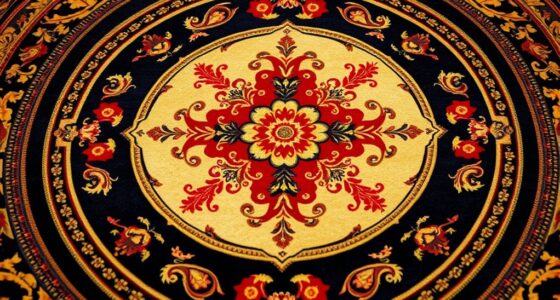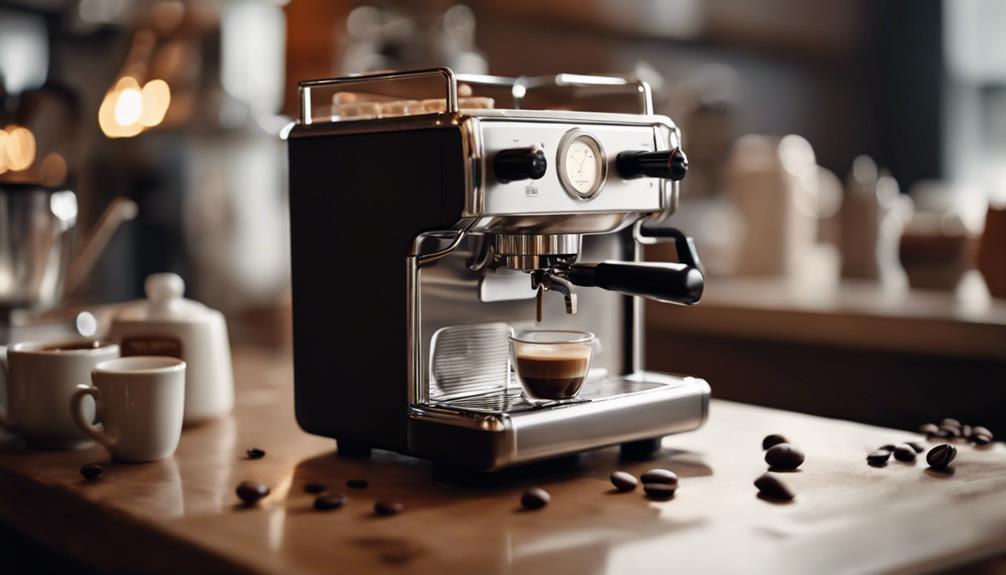When I’m out capturing the night sky, I always rely on the Sky-Watcher AZ5 for its sturdy build and precise tracking. The NEEWER 72-inch tripod is my go-to for stability, especially during long exposures. For portability, the iEXOS-100-2 PMC-Eight is fantastic, making star alignment a breeze. Each of these options enhances my astrophotography experience. Stick around to discover even more tips on selecting the perfect gear for your celestial shots!
Key Takeaways
- The Sky-Watcher AZ5 offers sturdy portability and precise tracking, ideal for beginner and intermediate astrophotographers despite some reliability concerns.
- The NEEWER 72-inch Tripod/Monopod provides solid stability and supports up to 33 lbs, making it great for long exposures in windy conditions.
- The iEXOS-100-2 PMC-Eight features user-friendly controls and quiet motors, perfect for portable astrophotography and beginner star alignment.
- When selecting mounts, ensure they exceed total equipment weight by 30% for optimal stability and reduced vibrations during long exposures.
- Key features to consider include compatibility with equipment, tracking precision, and additional stability enhancements like anti-vibration pads and quick-release plates.
Sky-Watcher AZ5 Telescope Mount (S20110)
If you’re a beginner or intermediate astronomer looking for a reliable mount that balances portability and stability, the Sky-Watcher AZ5 Telescope Mount (S20110) might just be the perfect fit for you. Weighing around 12 pounds and featuring adjustable 1.75-inch tripod legs, it’s easy to transport. I love the geared slow-motion controls, which allow for precise tracking of celestial objects. It supports optical tubes up to 15 pounds, making it versatile for various telescope types. While some users have reported manufacturing issues, its overall stability and ease of use markedly enhance the viewing experience. It’s a solid choice for aspiring astrophotographers!
Best For: Beginner and intermediate astronomers seeking a portable and stable telescope mount for visual astronomy and terrestrial observations.
Pros:
- Sturdy, lightweight design with adjustable tripod legs for easy transport.
- Geared slow-motion controls for precise tracking of celestial objects.
- Supports a variety of telescopes up to 15 pounds, enhancing versatility.
Cons:
- Some users have reported manufacturing issues, particularly with the extension shaft threading.
- Quality control concerns may require verification before purchase.
- Replacement units have also experienced similar issues, affecting reliability.
NEEWER 72 inch Camera Tripod Monopod
The NEEWER 72-inch Camera Tripod Monopod stands out for its impressive stability and versatility, making it an ideal choice for both budding and experienced astrophotographers. Constructed from durable aluminum alloy, it supports up to 33 lbs, ensuring solid support for my DSLR during long shoots. I love how it converts to a monopod—perfect for lightweight portability. With adjustable legs and a ball head for smooth positioning, I can easily capture low or overhead shots. While it’s a bit heavier than carbon fiber options, the stability it offers in windy conditions is worth it. It’s a reliable, multi-functional tool for my astrophotography needs.
Best For: The NEEWER 72-inch Camera Tripod Monopod is best for astrophotographers and content creators seeking a stable, versatile support system for their DSLR and camcorder setups.
Pros:
- Solid stability and durability, supporting up to 33 lbs for heavier setups.
- Converts easily into a monopod for lightweight portability during shoots.
- Adjustable legs and ball head allow for smooth positioning and versatile shooting angles.
Cons:
- Heavier than carbon fiber alternatives, which may be a drawback for travel.
- Center column extension can be slow, impacting setup time.
- Sand or dirt can clog threads, requiring careful use in sandy conditions.
iEXOS-100-2 PMC-Eight Equatorial Tracker System for Astrophotography
Designed specifically for astrophotography enthusiasts, the iEXOS-100-2 PMC-Eight Equatorial Tracker System stands out with its integrated Explore Scientific PMC-Eight system, featuring eight independent CPUs for exceptional responsiveness. I love its portability and ease of assembly, making it perfect for my astrophotography adventures. The clutched dual-axis worm gears and quiet stepper motors provide precise movement, while the ExploreStars app simplifies star alignment. Although I faced some initial GoTo accuracy issues, calibration improved my results. The build quality is decent for the price, but I found the tripod legs a bit flimsy. Overall, it’s a solid choice for beginners.
Best For: The iEXOS-100-2 PMC-Eight Equatorial Tracker System is best for beginner astrophotographers seeking an affordable and portable mount with user-friendly features.
Pros:
- Easy assembly and portability make it ideal for outdoor astrophotography.
- Integrated ExploreStars app simplifies star alignment and navigation.
- Good guiding performance with minimal star trails during exposures.
Cons:
- Initial GoTo accuracy may require calibration to improve results.
- The tripod legs are perceived as flimsy, affecting overall stability.
- Some features, like Bluetooth, necessitate manual firmware updates and troubleshooting.
Factors to Consider When Choosing Tripods and Pier Mounts for Astrophotography

When I’m choosing tripods and pier mounts for astrophotography, I focus on several key factors. Load capacity, stability, and portability are vital to guarantee my gear is supported and easy to transport. I also consider adjustability and compatibility with my equipment to maximize my shooting potential.
Load Capacity Considerations
Choosing the right load capacity for your tripod or pier mount is essential for achieving the best results in astrophotography. I always ensure that my equipment can support at least 30% more than the total weight of my setup. This extra margin helps maintain stability and reduces vibrations, which is crucial during long exposures. It’s vital to check the manufacturer’s maximum load capacity and never exceed it to prevent structural failure. Heavier setups can provide more robustness but may affect portability. Remember to factor in all accessories—cameras, guide scopes, and counterweights—when calculating weight. A higher load capacity minimizes flex and movement, leading to sharper images, which is what we all aim for in our night sky shots.
Stability and Construction Quality
While the allure of capturing the night sky is undeniable, the stability and construction quality of your tripod or pier mount can make all the difference in your astrophotography experience. I’ve learned that choosing high-quality materials like aluminum or cast iron guarantees long-term stability during those late-night sessions. The overall build quality, including tight-fitting joints and reinforced connections, markedly impacts vibration reduction and steadiness. Heavier mounts generally provide superior stability, minimizing unwanted movement from wind or ground vibrations. Precise manufacturing tolerances prevent wobbling that can ruin image sharpness in long exposures. Features like reinforced legs, effective locking mechanisms, and vibration dampening pads are essential for achieving the detailed shots we all seek in astrophotography.
Portability and Weight Factors
Understanding the balance between portability and weight is vital for anyone serious about astrophotography. I’ve found that lighter tripods and mounts considerably enhance my ability to transport gear to remote locations, making spontaneous night sky observations easier. However, I also know that increased weight usually means greater stability, which reduces vibrations and sharpens images during long exposures. Materials like carbon fiber or aluminum alloy strike a great balance between being lightweight and sturdy. It’s essential to consider the total weight of my setup; I want something manageable yet stable. If a tripod or mount is too heavy, it can limit my adventures and enjoyment of astrophotography, so choosing wisely is key.
Adjustability and Versatility
When it comes to astrophotography, having a tripod or pier mount that offers adjustability and versatility can make all the difference. I’ve found that adjustable tripods and mounts with multiple extension sections and tilt mechanisms let me reach the perfect height and angle for capturing celestial wonders. Versatile mounts often come with features like removable legs and multi-directional panning, adapting to my diverse shooting needs. The ability to fine-tune elevation and azimuth settings is essential for aligning with celestial objects accurately. Plus, compatibility with accessories like counterweights enhances my setup’s adaptability. A high degree of adjustability ensures stability, minimizing vibrations, which ultimately improves image quality during those long exposure shots I love.
Compatibility With Equipment
Choosing the right tripod or pier mount for astrophotography isn’t just about adjustability; compatibility with your equipment plays a vital role too. First, make sure the mount features a compatible mounting plate or dovetail saddle that aligns with your telescope or astrophotography gear, like Vixen-style or L-brackets. Next, check the load capacity to support your telescope, camera, guide scope, and accessories without sacrificing stability. It’s also essential to verify that the mounting system accommodates standard astrophotography accessories, which often require specific interfaces. Don’t forget to confirm that the mount’s control system works with your astrophotography software or remote devices, and ensure the dimensions fit your equipment’s mounting bars or dovetails, especially if you have larger setups.
Tracking Precision and Control
For those of us passionate about astrophotography, tracking precision and control are essential to capturing stunning images of the night sky. High tracking precision prevents star trails during long exposures, ensuring our images remain sharp. I’ve found that mounts featuring dual-axis worm gears and stepper motors considerably enhance stability and accuracy when tracking celestial objects. Additionally, precise control mechanisms, like slow-motion manual controls or motorized systems with fine adjustments, allow for better alignment as we follow objects across the sky. Look for mounts with integrated autoguiding and software control, as they can compensate for minor tracking errors. Factors such as gear backlash, motor responsiveness, and calibration routines are critical in achieving the tracking precision we need for successful astrophotography.
Additional Features and Accessories
While exploring the world of astrophotography, I’ve discovered that additional features and accessories can substantially enhance my experience and the quality of my images. For instance, built-in bubble levels and quick-release plates make setup easier and more stable. I love how compatibility with various mounting accessories, like ball heads and panoramic heads, gives me flexibility in positioning my camera or telescope. Some tripods offer reversible center columns for unique overhead shots or integrated weight hooks to improve stability during long exposures. Remote control options, such as smartphone integration, allow for precise tracking without manual adjustments. finally, using anti-vibration pads and extension arms can optimize my setup, ensuring I capture the night sky in all its glory.
Frequently Asked Questions
What Is the Maximum Weight Capacity for These Tripods and Mounts?
The maximum weight capacity for tripods and mounts varies widely, but I’ve seen ranges from around 10 to over 50 pounds. It really depends on the specific model and brand. When I choose a tripod or mount, I always consider my gear’s weight to guarantee stability. If you’re planning to attach heavy cameras or telescopes, I’d recommend going for something with a higher weight capacity for peace of mind during those long exposures.
Can I Use These Mounts With Smartphones for Astrophotography?
Absolutely, you can use these mounts with smartphones for astrophotography! I’ve tried it myself, and it’s a game changer. By securing your phone in a quality mount, you’ll capture stunning night sky images. Just make sure to use a good app that allows for long exposures, and you’ll be amazed at the results. Whether you’re a beginner or a seasoned pro, your smartphone can be a powerful tool for capturing the cosmos!
How Do I Maintain My Tripod or Pier Mount?
I maintain my tripod or pier mount by regularly checking for any loose screws or parts. I clean it after each use, removing dirt and moisture with a soft cloth. If it’s exposed to harsh conditions, I use a silicone spray to prevent rust. I also store it in a dry place and avoid leaving it out in the elements. Taking these steps keeps my gear in top shape for capturing those amazing night sky shots!
Are These Tripods Suitable for Both Photography and Videography?
When it comes to tripods, I’ve found they really can be the best of both worlds. Yes, these tripods are definitely suitable for both photography and videography. I’ve used mine for everything from stunning stills to smooth video shots, and it performs like a charm. Just make sure to check the weight capacity and stability, especially for heavier equipment. Trust me, a solid tripod makes all the difference in your work!
What Accessories Are Recommended for Enhancing Astrophotography With These Mounts?
To enhance astrophotography with these mounts, I recommend a sturdy ball head for precise adjustments, a remote shutter release to minimize vibrations, and a good intervalometer for capturing time-lapse sequences. A durable lens filter can help reduce light pollution, while a sturdy backpack ensures I carry everything safely. Finally, a star tracker can really elevate my shots by allowing for longer exposure times without star trails. These accessories have greatly improved my night sky photography!
Conclusion
In the grand scheme of astrophotography, you’d think picking a tripod or pier mount would be a walk in the park, right? Well, surprise! It’s more like steering through a cosmic maze. Whether you opt for the Sky-Watcher AZ5, the NEEWER tripod, or the iEXOS-100-2, just remember: the stars aren’t going anywhere, but your camera’s stability is vital. So, invest wisely and elevate those night sky shots—because shaky photos of the universe? That’s just a black hole of disappointment!













